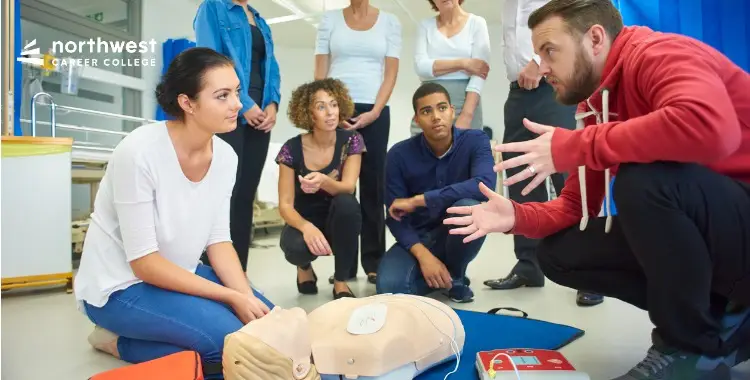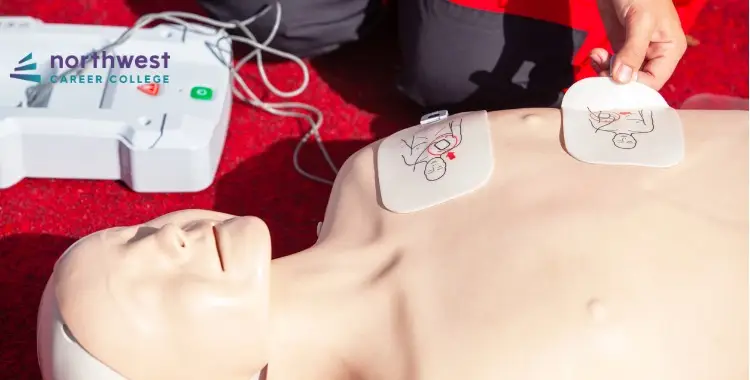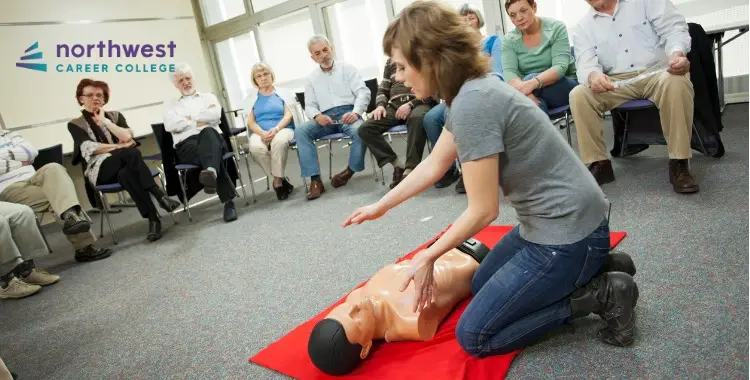The Importance of AED Training
- CPR
- April 8, 2025
- 3.0k views
- 4 min read

Before we go into why we need AED training; we need to explore what an AED device is. AED is the abbreviation for Automated External Defibrillator. The AED is an important step in helping save a life. An AED is a machine that can be transported and utilized for the automatic diagnosis of life-endangering cardiac arrhythmias of ventricular fibrillation and pulseless ventricular tachycardia.
The AED was invented as the transportable version of the defibrillator in the middle 1960s by a Frank Pantridge of Belfast, Northern Ireland. When a person has been trained at using an AED it permits them to provide defibrillation; a technique that utilizes electricity to halt the arrhythmia, letting the heart resume a normal, effectual pattern.
What this really means is that defibrillation is needed if a heart is quivering in a way whereas it is no longer pumping blood through the body. Defibrillation essentially shocks the heart to hopefully restore a normal rhythm.
What Can An AED Be Used To Treat?
The AED is utilized to aid in the event a person develops a life-endangering condition of cardiac arrhythmia which can then result in cardiac arrest—this is not alike to a heart attack. There are limitations to what an AED is capable of doing, such as:
- A pulseless ventricular tachycardia (also called VT or V-Tach)
- Ventricular fibrillation ( also known as VF or V-Fib)
In both forms, these types of cardiac arrhythmia the heart is in a state of being active electronically but in a rhythm that does not allow the heart to function properly by pumping and circulating blood through the body. In the case of ventricular tachycardia, the heart is beating too rapidly to pump the blood efficiently.
AED devices are not able to shock the asystole (flatlining) conditions with a positive clinical outcome. Therefore, it is essential that the use of CPR also be administered as a first aid treatment if the victim is going to have any chance of surviving.
How Do I Use A Defibrillator/AED?
Most AED’s automatically analyze a victim’s heart rhythm and then uses visual or voice prompts to guide you through each step.
• First, make sure someone has called for an ambulance, and, if an AED isn’t immediately available, give CPR (cardiopulmonary resuscitation) until someone can bring you an AED.
• As soon as you’ve got an AED, switch it on. It will immediately start to give you a series of visual and verbal prompts informing you of what you need to do. Follow these prompts until the ambulance arrives or someone with more experience than you takes over.
• Take the pads out of the sealed pack. Remove or cut through any clothing and wipe away any sweat from the chest
• Remove the backing paper and attach the pads to their chest
• Place the first pad on their upper right side, just below their collarbone as shown on the pad
• Then place the second pad on their left side, just below the armpit. Make sure you position the pad lengthways, with the long side in line with the length of their body
• Once you’ve done this, the AED will start checking the heart rhythm. Make sure that no-one is touching the person. Continue to follow the voice and/or visual prompts that the machine gives you until help arrives.
Saving Lives
Here at Northwest Career College, we are committed to providing affordable, quality CPR Classes to the Las Vegas community. We pride ourselves on being an American Heart Association (AHA) testing center and we offer Las Vegas CPR classes designed to fit your personal needs and professional schedule. As part of our “student-focused” approach to education, we also offer our CPR classes free of charge to all of our students. Call us today at (702) 403-1592 to book your CPR class and become qualified to save a life in just 4 hours!



